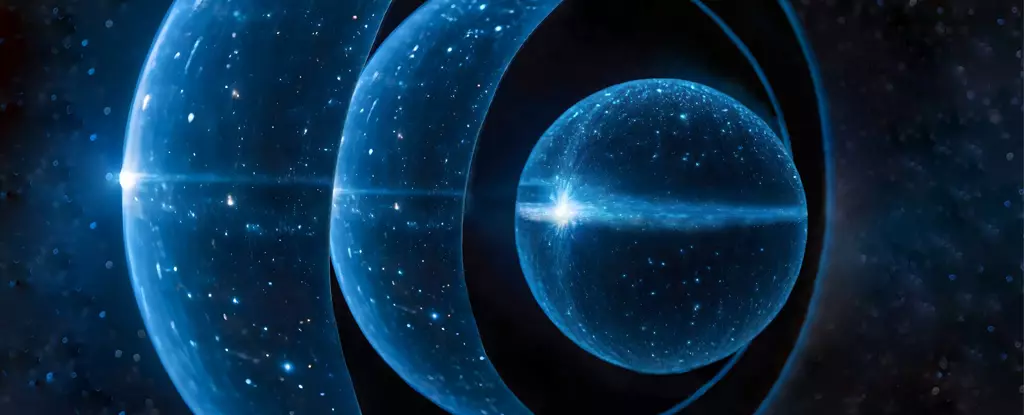Black holes, once considered hypothetical monsters arising from Einstein’s general theory of relativity, have now been acknowledged as tangible celestial entities. Physicists Daniel Jampolski and Luciano Rezzolla from Goethe University Frankfurt have delved back into the fundamental equations that govern black holes and have emerged with a fresh perspective. Their new solution presents a gravitationally-confined ‘bubble’ concept, offering a unique interpretation that challenges traditional depictions of black holes.
The Enigmatic Nature
One of the intriguing aspects of black holes lies in the fact that gravity can overpower all other forces when mass is compressed within a Schwarzschild radius. However, the application of quantum physics at minuscule scales poses a significant challenge in understanding the behavior of matter beyond a certain point. The coexistence of objects that can absorb information indefinitely and emit Hawking radiation creates a paradox rooted in the preservation of information.
In an effort to resolve these enigmatic features of black holes, quantum physicist Pawel Mazur and astrophysicist Emil Mottola proposed the concept of a gravitational condensate star, known as a gravastar. This theoretical construct involves matter compressed to extreme thinness and counteracted by dark energy from within. Despite their unconventional nature, gravastars bear resemblance to black holes externally, offering a possible explanation for information retention and avoiding the need for a quantum singularity at their core.
Jampolski and Rezzolla took the gravastar concept a step further by introducing the idea of nested structures within these celestial bodies. By envisioning a gravastar with a thicker membrane that houses a secondary gravastar, they postulated the existence of “nestars.” These nestars mimic the nesting dolls, with each layer containing its own compacted matter shell. While the physical manifestation of nestars remains uncertain, their exploration provides valuable insights into the mathematical properties of black holes.
Although the creation of gravastars and nestars remains a challenge, the theoretical exercise of exploring these concepts plays a crucial role in expanding our understanding of black holes. By pushing the boundaries of existing theories, scientists may uncover crucial observations that shed light on the most puzzling aspects of these cosmic entities. As Rezzolla aptly puts it, “exploring the mathematical properties of these solutions ultimately helps us to better understand black holes.”
The quest to unravel the mysteries of black holes continues to inspire innovative approaches and theoretical frameworks. By challenging conventional wisdom and exploring alternative concepts, scientists pave the way for groundbreaking discoveries that could revolutionize our understanding of the universe’s most enigmatic phenomena.



Leave a Reply